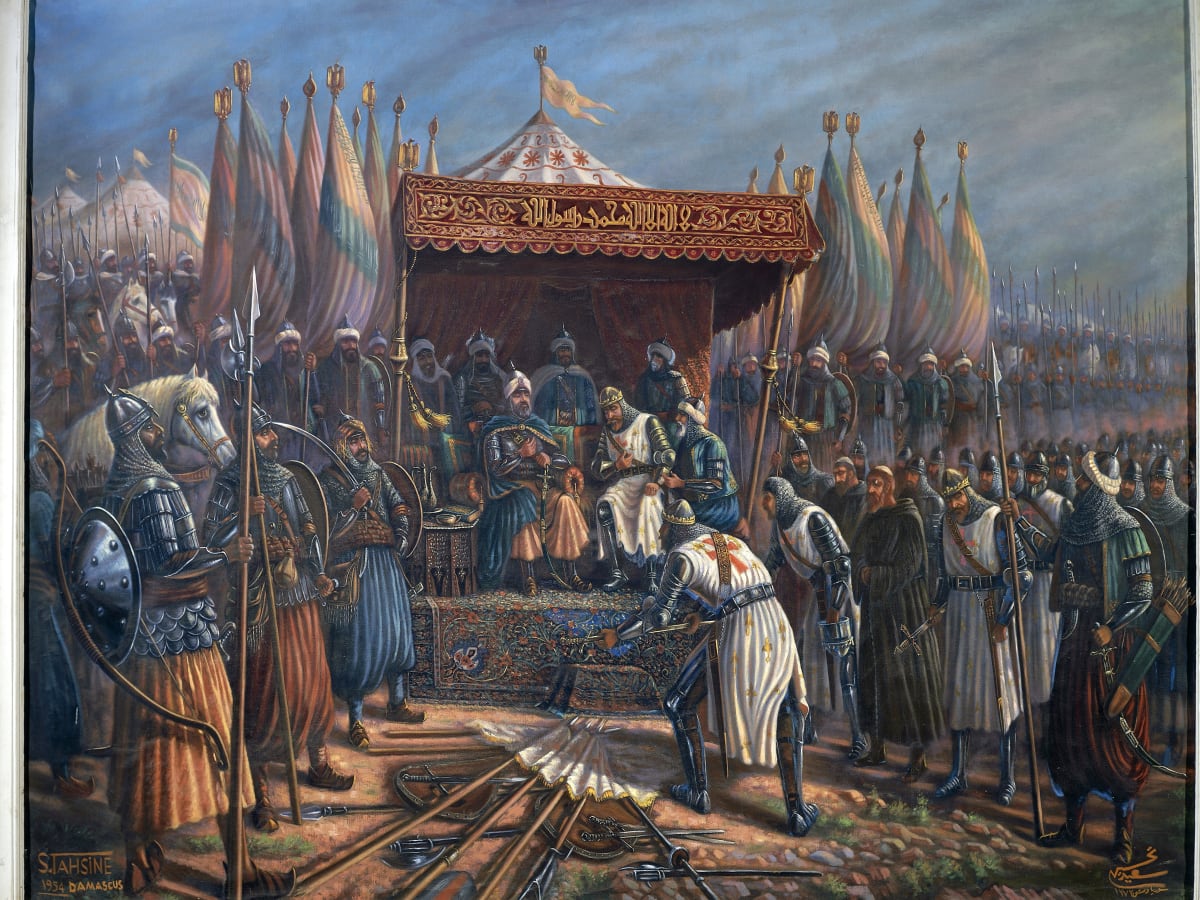From the third century on, Christians had visited the scenes of Christ’s life. Before the Muslim conquest in the seventh century, pilgrims came from Byzantium and the West, often seeking sacred relics for their churches at home. For a while after the Muslim conquest, pilgrimages were very dangerous and could be undertaken only by the hardiest pilgrims. During the reign of Charlemagne, conditions had improved for Western pilgrims, largely because of the excellent relations between Charlemagne and Caliph Harun al-Rashid.
So deep was Charlemagne’s interest that there sprang up a legend that he had somehow acquired from Harun a “protectorate” over the Holy Land. By the tenth century the belief had grown that pilgrimage would procure God’s pardon for sins. Santiago of Compostela in Spain, and of course Rome itself, had become favorite places of pilgrimage, but no place could compare in importance with the shrines of Palestine.
Obviously, stable conditions in both Muslim and Byzantine dominions were essential for the easy and safe continuance of pilgrimages. But in the early eleventh century the able though eccentric Egyptian ruler of Palestine, Hakim (r. 996-1021), began to persecute Christians and Jews and to make travel to the Holy Places unsafe. Moreover, with the death of the last ruler of the Macedonian house in 1057, an open struggle began at Byzantium between the civil servants of the court and the military led by the great landowners of Asia Minor. Simultaneously came the rise in Asia of the Seljuk Turks.
By 1050 the Seljuks had created a state centering on Persia. In 1055 they entered Baghdad on the invitation of the Abbasid caliph and became the champions of Sunnite Islam against the Shi’ite rulers of Egypt. In the 1050s Seljuk forces raided deep into Anatolia, almost to the Aegean. Their advance culminated in the catastrophic Byzantine defeat at Manzikert in 1071, followed by the occupation of most of Asia Minor and the establishment of a new sultanate with its capital at Nicaea. Jerusalem fell in the year of Manzikert and became part of a new Seljuk state of Syria.
In 1081 Alexius I Comnenus, a general and a great landowner, came to the Byzantine throne (r. to 1118). He held off the Norman attack on the Dalmatian coast through an alliance with Venice, and he played one local Turkish potentate off against another, slowly reestablishing a Byzantine foothold in Asia Minor. Civil wars among the Turks and the multiplication of brigands on the highways in Anatolia and Syria made pilgrimage in the two decades after Manzikert ever more dangerous.
The schism between Eastern and Western churches provided the papacy with an additional incentive for intervention in the East. In 1073 Pope Gregory VII sent an ambassador to Constantinople, who reported that the emperor was anxious for a reconciliation.
Gregory VII planned to reunite the churches by extending the holy war from Spain to Asia. He would send the Byzantines an army of Western knights, which he would lead himself. It was only the quarrel over investiture with the German emperor that prevented the pope from carrying out this plan.

